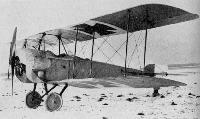
Описание
Страна: Германия
Год: 1914
Варианты
- Gotha - LD.1 - 1914 - Германия
- Gotha - LD.2/LD.5/B - 1914 - Германия
- O.Thetford, P.Gray German Aircraft of the First World War (Putnam)
- J.Herris Gotha Aircraft of WWI (A Centennial Perspective on Great War Airplanes 6)
- M.Dusing German Aviation Industry in WWI. Volume 1 (A Centennial Perspective on Great War Airplanes 84)
-
J.Herris - Gotha Aircraft of WWI /Centennial Perspective/ (6)
Two views of the prototype Gotha LD2 showing its streamlined engine cowling and spinner and very low profile fin and rudder.
-
J.Herris - Gotha Aircraft of WWI /Centennial Perspective/ (6)
The production prototype of the Gotha LD2 was far less appealing than the first prototype. The cowling was modified for better cooling and the fin and rudder were now enlarged for better stability and control.
-
J.Herris - Gotha Aircraft of WWI /Centennial Perspective/ (6)
Another view of the production prototype Gotha LD2 shows the unlovely cowling as redesigned for better cooling. National insignia were prominently painted on the wings.
-
H.Cowin - Aviation Pioneers /Osprey/
Typical of the two seat reconnaissance biplanes in service with the German Imperial Air Service at the outbreak of war was this Gotha B. First flown at the start of 1914, the LD-1a became the B on entering military service, signifying it to be the first biplane type purchased from the firm. Had it been a monoplane, it would have carried the military designation Gotha A, with subsequent types becoming Gotha A 2s or B 2s, etc. Powered by a 100hp Daimler D I, the prototype was followed by ten further examples, 458/14 to 467/14, these machines differing from the first in being fitted with a 100hp Oberursal copy of the original Gnome Monosoupape, as seen here. The Gotha B's top level speed was 71.5mph, while its maximum range was 323 miles.
-
J.Herris - Gotha Aircraft of WWI /Centennial Perspective/ (6)
The Gotha LD5, powered by a 100 hp Oberursel U.I, was designed as a 'cavalry biplane', a light observation plane designed to accompany an army on the move. The sole LD5 built served as a trainer at FEA 3.
-
M.Dusing - German Aviation Industry in WWI. Volume 1 /Centennial Perspective/ (84)
Gotha LD 5 (1914) with rotary engine and Integral propeller (Chauviere design).
-
Форум - Breguet's Aircraft Challenge /WWW/
The machine is the Gotha LD 5 a 'mini' plane for quick scouting ('Kavallerie Flugzeug') developed in november 1914.
Although initially designed as a high performance two seater, the Gotha LD-5 was rejected for field service as other than a single seat advanced trainer and even in this role, its small wing area and consequent high wing loading would ensure that it was confined to operating from the longest of available airstrips. First flown in December 1914, the LD-5 used a 100hp Oberursel Ur I, but no other useful performance data survives. The real mystery surrounding the LD-5, however, is how Gotha were permitted to build no less than 13 of these fairly pilot-unfriendly looking brutes. -
J.Herris - Gotha Aircraft of WWI /Centennial Perspective/ (6)
The lesser-known Hun fighter, the Gotha short span two-seater.
O.Thetford, P.Gray German Aircraft of the First World War (Putnam)
Gotha LD 1a
Developed from the pre-war (April 1914) LD 1, the la was built in 1915. It was of orthodox wood and fabric construction except for steel-tube control surfaces. Engine, 100 h.p. Oberursel U I. Span, 14.5 m. (47 ft. 7 in.). Length, 7.4 m. (24 ft. 3 3/8 in.). Weights: Empty, 525 kg. (1,155 lb.). Loaded 917 kg. (2,017 lb.). Speed, 115 km.hr. (71.875 m.p.h.). Climb, 800 m. (2,624 ft.) in 8 min. Armament, none.
Gotha LD 5
Built in November 1914, this diminutive biplane was intended for fast scouting duty (Kavallerie Flugzeug). The undercarriage chassis is of interest, being virtually a single-strut structure with cable bracing forward and a light steel tube to the rear. The arched decking forward of the cockpit, housing the fuel tanks, is also noteworthy. Engine, 100 h.p. Oberursel U I.
Описание:









